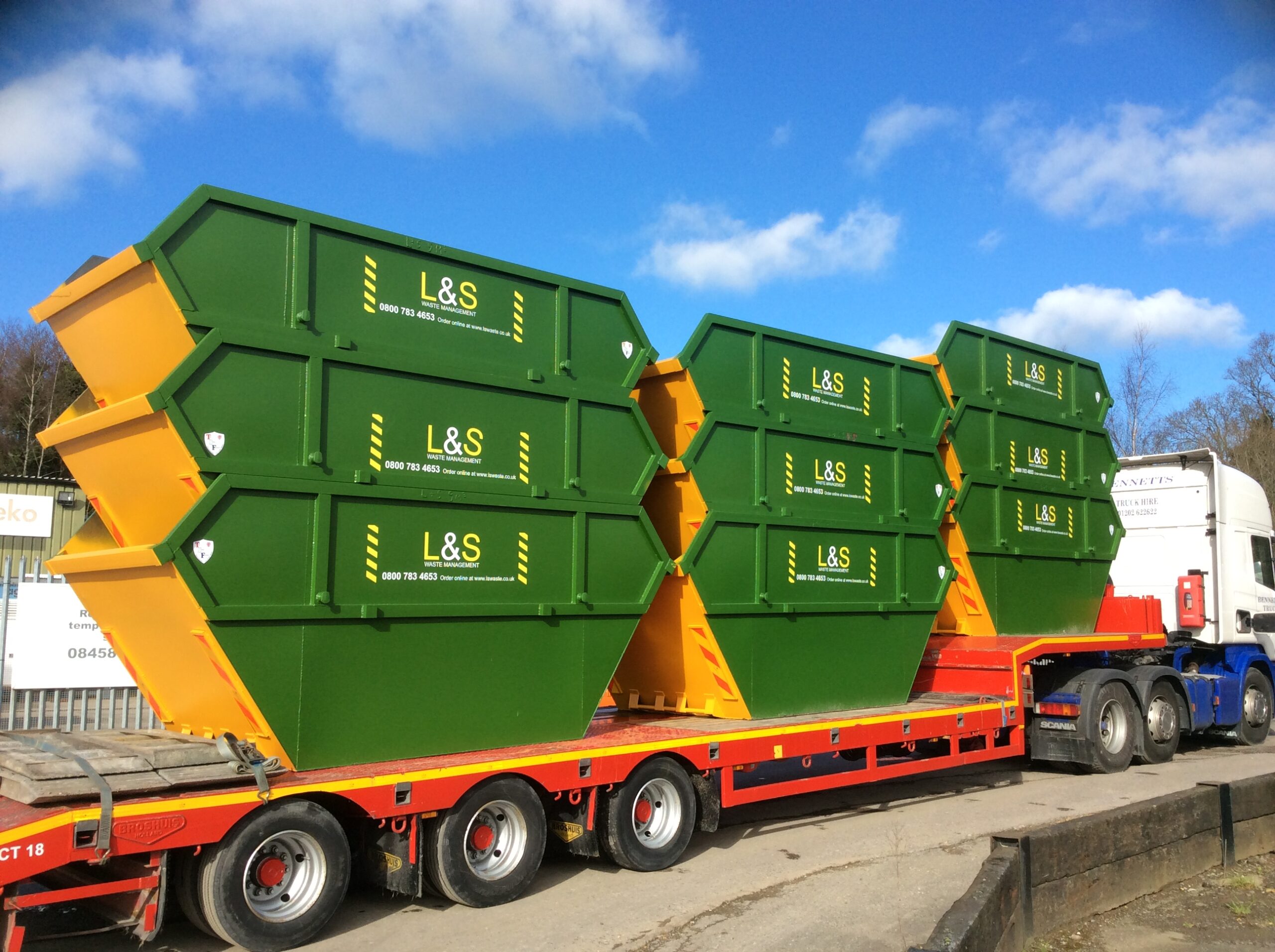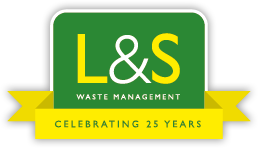We’ve been known as L&S Waste Management for 14 years. People always ask where L&S came from.

What can be put in a skip?
Skip hire should be a straightforward way of getting rid of bulky unwanted waste. Skips come in all shapes and sizes and can carry a diverse selection of waste, from old household furniture to construction waste and more, but there are rules surrounding what you can and cannot throw into your skip.
In this blog, we’re looking at the kinds of waste you can put into your skip, and to make it simple, we have divided these items into categories, with a brief list of the most common items you’re allowed to throw away in a skip.
What you can put in a Skip
Building and renovation waste
Whether for large or small scale construction, skips are the perfect way of keeping worksites orderly, offering a single destination for much of the waste generated during building developments. These include:
- Bricks
- Metal
- Wood
- Solidified paint
- Building rubble
Furniture
Large pieces of furniture are some of the most troublesome items to dispose of. However, a large enough skip will take on just about all your unwanted furniture. For wooden furniture, it’s usually best to dismantle or break it down first, in order to save space.
- Wardrobes
- Desks
- Tables
- Chairs
- Sofas
- Plastic garden furniture
- Any pieces of wooden furniture
Domestic waste
You can place most general domestic waste into a skip. It’s a bit of a catch-all category, but that’s because domestic waste can be so varied! Here are some of the common things you might want to throw away:
- Food packaging
- Empty tins
- Cardboard
- Polystyrene
- Food
- Empty drinks bottles
Garden waste
If you are planning a landscaping project then a skip will take all sorts of garden waste so you can keep the outdoors organised while the redesign is being done.
- Soil
- Grass clippings
- Leaves
- Hedge trimmings
- Flower cuttings
Miscellaneous
- Non-electrical fittings
- Gas cookers
- Plastics
- Scrap metal
- Bricks
Skip hire considerations
Now we have given you a steer as to what you’ll be able to put into your skip, there are a few other things to think about.
The size of your skip is something you’ll need to think about early on. You’ll need a skip big enough for your requirements so you’re not wasting money. Read our blog on skip sizes which will give you an insight into what kinds of skips are suitable for certain projects.
There’s also the issue of overloading a skip. A skip will have a clearly-marked fill line on the inside. Filling above this point could lead to your skip supplier refusing – or being unable to – take your skip away. That’s because an overfilled skip is dangerous, especially while it’s being loaded and unloaded to/from a truck, or while it’s being transported back to base. Ensure you choose a skip big enough to fit all your waste, and be smart while filling it up so as not to overdo things. Again, we have written a handy guide to overloading skips help you understand what is acceptable.
What not to put into a skip
The above lists are a great point of reference for items we’re happy for you to put into our skips. Unfortunately, not everything can be safely disposed of in a skip. Read our Tips for Skips document before you begin loading your skip.
If you need any further information on skip sizes – or what you can and can’t load into our skips – we are happy to advise.
Don’t forget you can get instant prices and order your skip online with L&S.
Company Bio
Find out why L&S is no ordinary waste management company.
Go >
L&S In The Community
Learn more about our community projects.
Go >
Meet The Team
An introduction to the L&S management.
Go >












